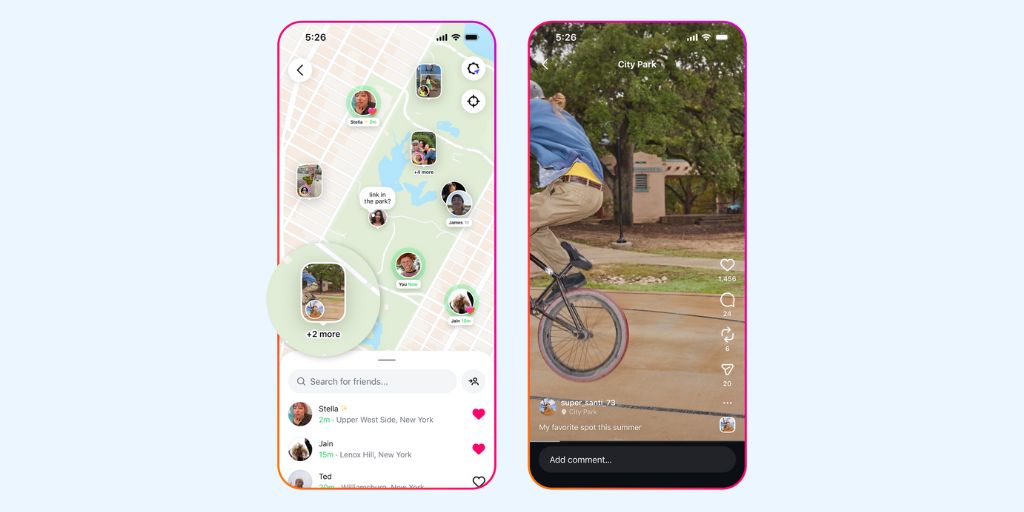
Welcome to Parent Pixels, a parenting newsletter filled with practical advice, news, and resources to support you and your kids in the digital age. This week:
📍 Teens can now share location with friends on Instagram: The new Instagram Map allows users to share their location with friends and see content people are posting from different places. The feature is similar to Snapchat’s Snap Map … and has similar privacy concerns: if your child isn’t picky about who follows them on Instagram, they might end up sharing their location with strangers. Big yikes.
Location sharing is off unless you opt in, and if you’ve set up parental supervision on your teen’s account, you’ll get notified if your teen starts sharing their location and see who they’re sharing their location with.
The fact remains, though, that this feature opens up more risks than rewards, and we recommend talking to your teen about why it’s better to keep their location private (and only share their location with you), rather than broadcasting their personal info to their entire friends list.
👀 TikTok introduces new parental controls: TikTok’s parental control suite is getting an upgrade just in time for the school year. TikTok Family Pairing allows parents to set content and communication limits for their teen. Soon, Family Pairing will also automatically notify a parent when their teen uploads anything that’s visible to others on TikTok, and it will show parents what privacy settings and topics their teen has selected to shape their feed.
If your child uses TikTok and you haven’t already set up Family Pairing, now is the time — but pair it with regular check-ins and conversations about what they see on their For You page. (Psst: For extra protection, BrightCanary monitors what your child types on all the apps they use, including TikTok comments and messages.)
▶️ YouTube will use AI to tell if your child fibbed about their age: YouTube is cracking down on age verification. YouTube has different experiences for kids and adults, including age-restricted protections like disabled personalized advertising and limiting repetitive views of some content — but it’s relatively easy for kids to fib about their age. Soon, YouTube will use machine learning to determine if a user is an adult or not.
The AI will analyze a bunch of signals, including the types of videos a user searches for and how old the account is. For users who are incorrectly flagged as kids (or kids at heart), they’ll have the option to verify that they’re older than 18 using a government ID or other form of identification.
So. If everything works as it should, kids won’t be able to watch age-restricted content. Of course, that’s a big “if.” Continue to supervise your child’s YouTube use. Talk about the content they see and what to do if something makes them feel uncomfortable. You can use BrightCanary to monitor their YouTube account and keep track of what they watch, including the ads they see.
📱 Webinar: How to make social media as safe as it CAN be: Lots of social media updates this week, but that’s because social media platforms constantly update their features and protections (or lack thereof). That’s why we’re happy to share “Safe Social Media?!?” by Digital Mom Media and Healthy Screen Habits.
In this webinar, you’ll learn everything you need to make social media as safe as possible — how to get started, what to know about popular platforms, and how to build a sustainable social media plan. Learn more and get your tickets today.
Parent Pixels is a biweekly newsletter filled with practical advice, news, and resources to support you and your kids in the digital age. Want this newsletter delivered to your inbox a day early? Subscribe here.
We’re officially in back-to-school season. Cue the new backpacks, earlier bedtimes, and the return of juggling group chats and the social dynamics of the school hallways. The good news: A few honest conversations now can help your child start the year with healthy habits and a little more confidence. Here are conversation-starters to help you talk about managing stress, balancing screen time, and handling social pressures:
😬 Heads up if your teen is fueled by energy drinks: High Noon is recalling some vodka seltzers mislabeled as Celsius energy drinks.
⚠️ Minnesota is set to include warning labels on social media sites. Agree or disagree?
🚫 “ … YouTube cannot be trusted — the algorithm leads you very quickly down weird or concerning rabbit holes and the messaging in a video is often subtle and hard to screen as a parent without pre-watching everything (which is not realistic).” The Guardian surveyed parents about how their kids use YouTube, and the responses paint a picture of YouTube’s major pros and cons.